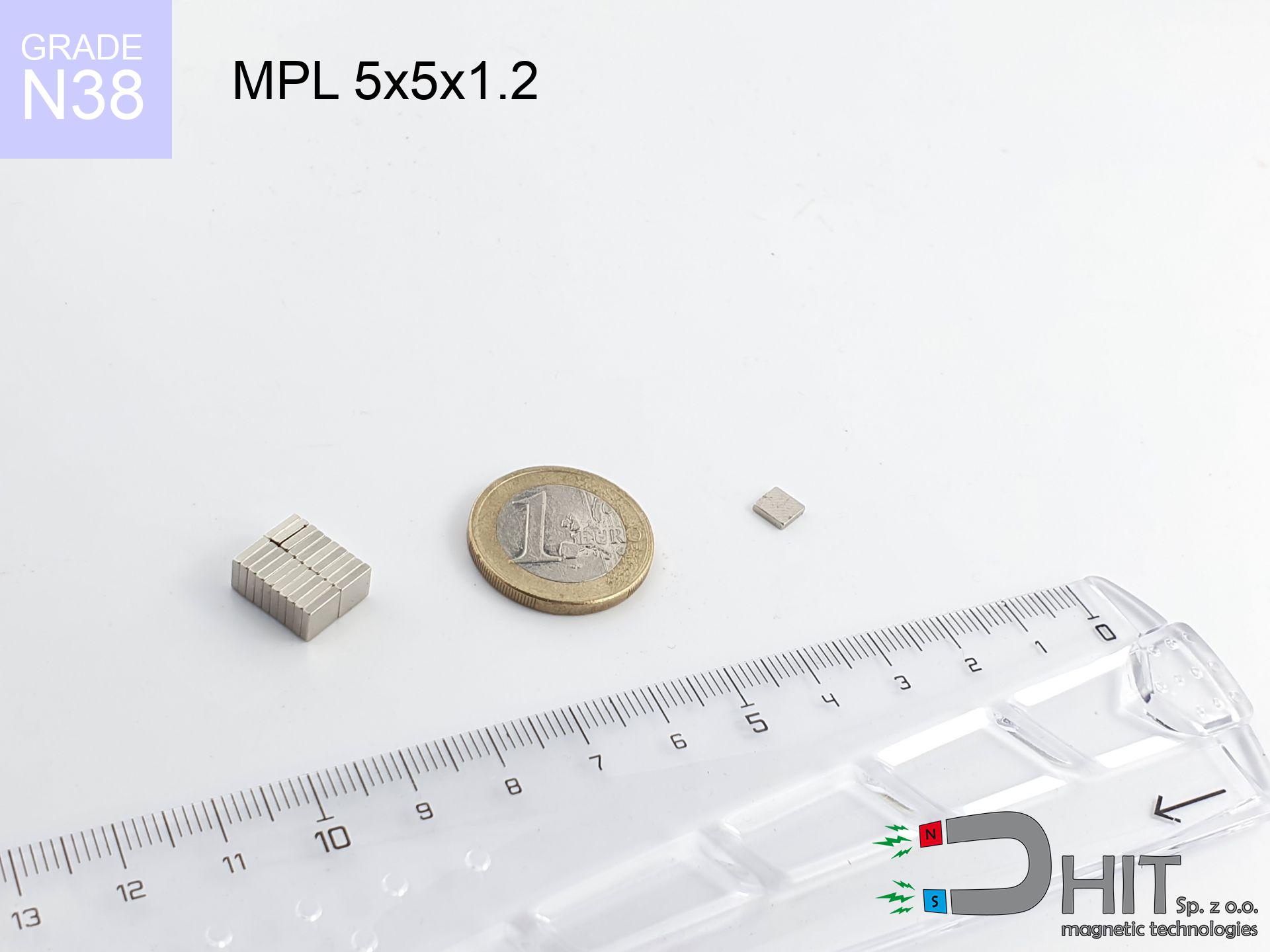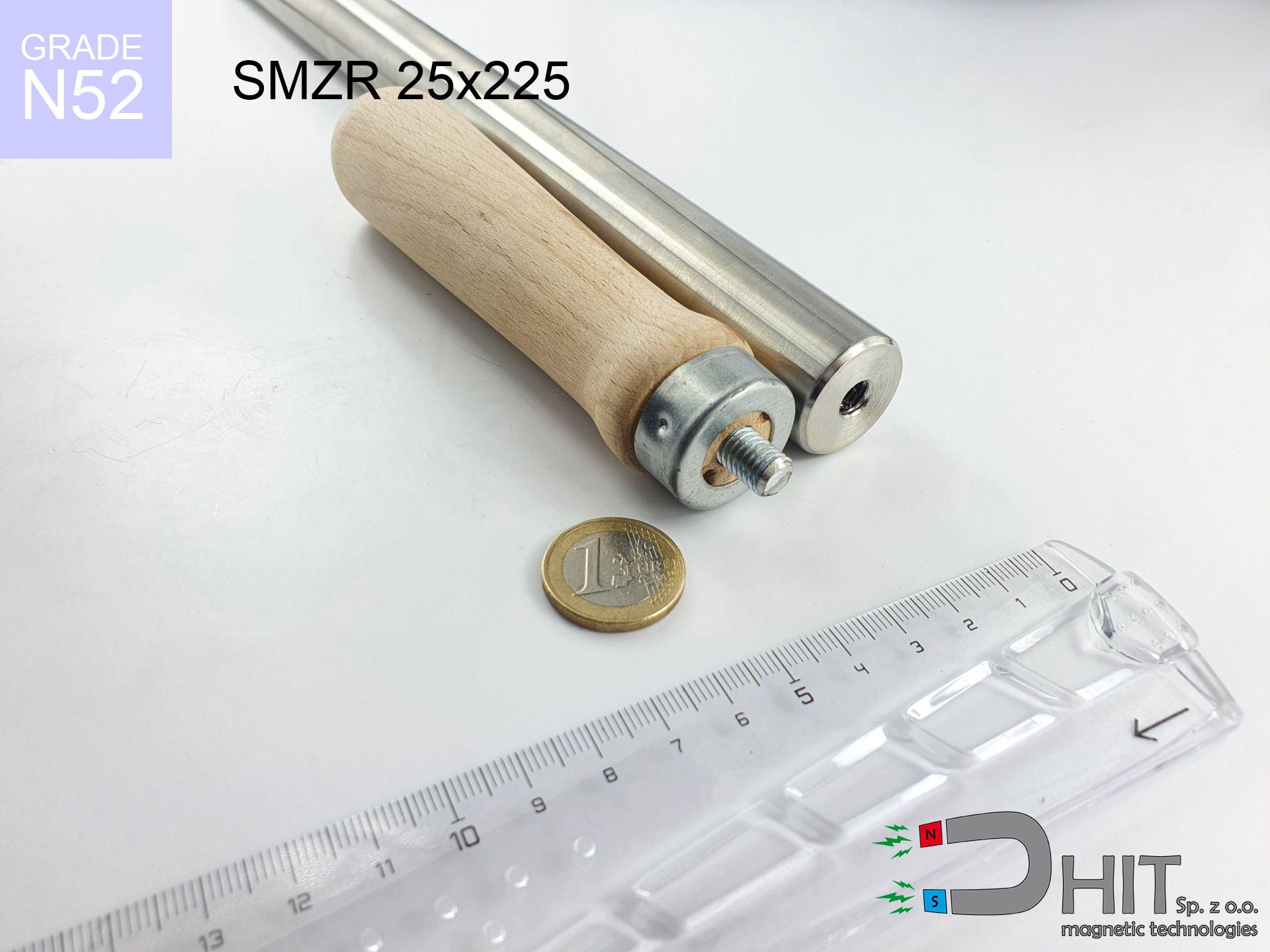SM 32x500 [2xM8] / N42 - magnetic roller
magnetic separator
catalog number 130374
GTIN: 5906301813224
diameter Ø
32
mm [±0,1 mm]
height
500
mm [±0,1 mm]
max. temperature
≤ 80
°C
catalog number 130374
GTIN: 5906301813224
diameter Ø
32 mm [±0,1 mm]
height
500 mm [±0,1 mm]
max. temperature
≤ 80 °C
1488.30 ZŁ gross price (including VAT) / pcs +
1210.00 ZŁ net price + 23% VAT / pcs
bulk discounts:
need more quantity?Don't know what to choose?
Give us a call tel: +48 22 499 98 98 or get in touch via form on the contact page. You can check the strength as well as the shape of magnet in our magnetic mass calculator magnetic calculator
Orders placed by 2:00 PM will be shipped on the same business day.
Specification: magnetic separator 32x500 [2xM8] / N42
Magnetic properties of the material N42
Physical properties of sintered neodymium magnets Nd2Fe14B
Shopping tips
Advantages as well as disadvantages of neodymium magnets NdFeB.
In addition to immense strength, neodymium magnets have the following advantages:
- They do not lose power over time. After approximately 10 years, their power decreases by only ~1% (theoretically),
- They are highly resistant to demagnetization by external magnetic field,
- By applying a shiny coating of nickel, gold, or silver, the element gains an aesthetic appearance,
- They have very high magnetic induction on the surface of the magnet,
- By using an appropriate combination of materials, they can achieve high thermal resistance, allowing them to operate at temperatures up to 230°C and above...
- The ability for precise shaping or customization to specific needs – neodymium magnets can be produced in a wide range of shapes and sizes, which enhances their versatility in applications.
- Significant importance in modern technologies – find application in hard drives, electric motors, medical devices and very highly developed apparatuses.
Disadvantages of neodymium magnets:
- They can break as they are extremely fragile when subjected to a powerful impact. If the magnets are exposed to impacts, we recommend using magnets in a protective case. The steel housing in the form of a holder protects the magnet from impacts and also increases its overall strength,
- High temperatures can reduce the power of neodymium magnets. Typically, after heating above 80°C, most of them experience a permanent reduction in strength (although it is dependent on the shape and size). To prevent this, we offer special magnets marked with the symbol [AH], which are highly resistant to high temperatures. They can operate even at temperatures up to 230°C, making them an ideal solution for applications requiring high-temperature operation,
- Magnets exposed to a humid environment can corrode. Therefore, when using them outdoors, we recommend using waterproof magnets made of rubber, plastic, or other moisture-resistant materials,
- Limited ability to create threads or complex shapes in the magnet - the use of a housing is recommended - magnetic holder
- Potential hazard arising from small pieces of magnets can be dangerous, when accidentally ingested, which is crucial in the context of children's health. It's also worth noting that small elements of these devices are able to complicate diagnosis when they are in the body.
Handle Neodymium Magnets with Caution
Comparing neodymium magnets to ferrite magnets (found in speakers), they are 10 times more powerful, and their power can shock you.
On our website, you can find information on how to use neodymium magnets. This will help you avoid injuries and prevent damage to the magnets.
Neodymium Magnets can attract to each other due to their immense internal force, causing the skin and other body parts to get pinched and resulting in significant injuries.
If the joining of neodymium magnets is not under control, at that time they may crumble and crack. Remember not to move them to each other or have them firmly in hands at a distance less than 10 cm.
Do not give neodymium magnets to youngest children.
Neodymium magnets are not toys. Do not allow children to play with them. Small magnets can pose a serious choking hazard. If multiple magnets are swallowed, they can attract to each other through the intestinal walls, causing significant injuries, and even death.
Dust and powder from neodymium magnets are highly flammable.
Do not attempt to drill into neodymium magnets. Mechanical processing is also not recommended. If the magnet is crushed into fine powder or dust, it becomes highly flammable.
Neodymium magnets can become demagnetized at high temperatures.
Although magnets have demonstrated their effectiveness up to 80°C or 175°F, the temperature can vary depending on the type, shape, and intended use of the specific magnet.
Do not bring neodymium magnets close to GPS and smartphones.
Intense magnetic fields generated by neodymium magnets interfere with compasses and magnetometers used in navigation, as well as internal compasses of smartphones and GPS devices.
Neodymium magnetic are fragile as well as can easily break and shatter.
Magnets made of neodymium are highly fragile, and by joining them in an uncontrolled manner, they will crack. Neodymium magnets are made of metal and coated with a shiny nickel surface, but they are not as hard as steel. At the moment of collision between the magnets, small metal fragments can be dispersed in different directions.
If you have a nickel allergy, avoid contact with neodymium magnets.
Studies show a small percentage of people have allergies to certain metals, including nickel. An allergic reaction often manifests as skin redness and rash. If you have a nickel allergy, try wearing gloves or avoid direct contact with nickel-plated neodymium magnets.
Keep neodymium magnets away from people with pacemakers.
In the case of neodymium magnets, there is a strong magnetic field. As a result, it interferes with the operation of a heart pacemaker. However, if the magnetic field does not affect the device, it can damage its components or deactivate the device when it is in a magnetic field.
You should maintain neodymium magnets at a safe distance from the wallet, computer, and TV.
Neodymium magnets generate strong magnetic fields that can destroy magnetic media such as floppy disks, video tapes, HDDs, credit cards, magnetic ID cards, cassette tapes, etc. devices. They can also damage videos, televisions, CRT computer monitors. Remember not to place neodymium magnets close to these electronic devices.
Please read the article - What danger lies in neodymium magnets? You will learn how to handle them properly.

![SM 32x500 [2xM8] / N42 - magnetic roller SM 32x500 [2xM8] / N42 - magnetic roller](https://cdn3.dhit.pl/graphics/products/sm-32x500-2xm8-jan.jpg)


![magnetic separator 32x400 [2xM8] / N52 magnetic separator 32x400 [2xM8] / N52](https://cdn3.dhit.pl/graphics/products/sm-32x400-2xm8-led.jpg)
![magnetic separator 32x200 [2xM8] / N42 magnetic separator 32x200 [2xM8] / N42](https://cdn3.dhit.pl/graphics/products/sm-32x200-2xm8-fub.jpg)

